Series B Lessons Learned
By True Ventures, August 10, 2010
The primary lesson I learned in both of our rounds of funding is that the best investor is an enthusiastic investor, and this was especially true in our second round.
When True Ventures invested in Puppet Labs last year, we had been talking to other firms but not actively pitching, and their enthusiasm for working with us, along with their great reputation and references, encouraged us to just work with them and get back to business. We could have tried to find other investors or held out for a larger valuation, but the amount was the right amount, the partners were great, and we were able to get back to work without ever having to formally pitch to a bunch of other investors (or even True – we never did build a deck for them).
When we decided that raising a second round of funding was a good idea, we spent a couple of months asking potential investors what they would like to see from us and what they thought of the story we were telling. I’ve been told that this kind of meeting is a bad idea – that every meeting with a VC should be a pitch meeting – but that just seems silly. If you think someone’s good enough to be an investor, they’re good enough to give you advice and feedback, and, if you don’t trust them enough to give you real feedback, then you probably don’t want them investing in your company.
We got varying levels of interest in that first round of conversations, and we kept talking to more people until we had a story that seemed like the right story and pool of great investors who seemed interested. This is when we started formally pitching, and the difference between an interested investor and an enthusiastic investor became very clear. Everyone we talked to said we should talk again soon, but Matt Murphy of Kleiner called again the next week, had us pitching in front of his team a week later, and had a term sheet in front of us the next day. That’s enthusiastic. It’s also almost exactly the same story as we had with True.
The key here is that the enthusiasm came before any terms or valuation for the deal were discussed. This enthusiasm has worked out great in our relationship with True, and it gives me great hope in our relationship with Kleiner.
I expect we could have gotten a higher valuation in both rounds if we were willing to pitch to more firms, but I don’t think we’d have gotten investors who believed as much in what we’re doing.
That leads us to the second lesson – it’s about the business, not about the money. Sometimes you have to raise money, but that raising keeps you from working on your business. If you decide to spend another quarter out looking for a better deal, that’s a quarter where you’re paying more attention to investor meetings and presentations than you are to running your business.
This is especially important for me. I basically hate the money-raising process – I want to write software, close deals, hire people, talk to customers, or present to hundreds of potential users, not present to just tens of people who won’t use the software. Telling your story again and again, continuously refining in the face of hopefully difficult questions, is incredibly informative, but it doesn’t get your release out the door and it doesn’t convince a potential customer that you’ve got the right solution to their problems. I’m not sure I ever would have even raised an A round if Puneet and True Ventures hadn’t been so enthusiastic about working with us.
In the intervening year, I’ve had to become much more of a CEO than a developer, but I still don’t like raising money. I like the challenge, and we were able to effectively refine our story, but I was thrilled to get back to building software and working with customers.
So my second lesson is to keep focus on the fact that money raising is about the business, not the process. We’re lucky enough and planned well enough that we had plenty of money left in the bank when we started to raise our second round, but we ran it pretty close with our first round – our sales pipeline was entirely empty, and, given that our sales cycle is a couple of months long and this had been my only source of income for 4 years, we let ourselves get into a dangerous position because we got too focused on closing the deal.
Find an enthusiastic partner, close the round, and get back to work. If you can’t find the enthusiasm, ask yourself if you’re really willing to sacrifice the next 3-6 months of work to get a deal closed.
I guess I have a couple of other small notes about our round. First, our initial term sheet mattered a lot. True set a strong precedent by providing great terms in the first round. Also, we were able to get one term sheet hack into our deal that enabled us to sell a small portion of our shares without having to ask every investor first. This is unlikely to come up any time soon, but I have a friend who was at his startup for 13 years through $55m in venture raised in something like 11 rounds of funding, and his life got very complicated when he wanted to sell a bit before the company went public. This small carve-out can make a huge difference, and it’s very little skin of your investor’s back.
Now get back to your business!
This post was written by Luke Kanies, CEO & Co-Founder of Puppet Labs, a True Ventures Portfolio Company.

